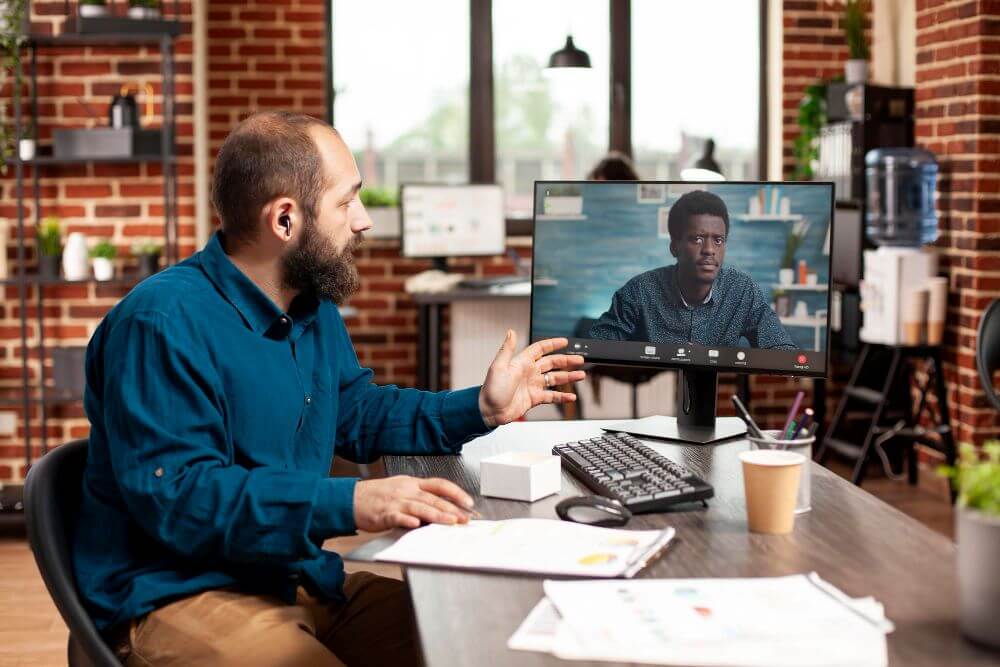In an era where corporate data breaches make headlines weekly, businesses face mounting pressure to protect their most confidential communications. While email encryption and secure file sharing have become standard practice, many organizations overlook a critical vulnerability: their video conferencing platforms. As remote work continues to reshape the business landscape, video conferencing solutions have evolved beyond simple screen sharing to become sophisticated communication hubs that handle everything from board meeting discussions to client negotiations.
The stakes couldn’t be higher. A single intercepted video call containing proprietary information, financial data, or strategic plans could devastate a company’s competitive advantage. Yet many businesses continue using consumer-grade platforms for their most sensitive discussions, unknowingly exposing themselves to significant security risks.
The Hidden Vulnerabilities in Standard Video Platforms
Most popular video conferencing platforms prioritize ease of use over security, creating numerous entry points for malicious actors. These vulnerabilities often remain invisible until it’s too late. Unsecured data transmission represents one of the most serious threats, as conversations travel across multiple servers without adequate encryption protocols.
Many platforms store recordings on third-party cloud servers with unclear security standards. This practice creates long-term exposure risks, especially when sensitive business information gets archived indefinitely. Additionally, weak authentication systems allow unauthorized participants to join meetings through easily guessed meeting IDs or compromised links.
The “Zoombombing” phenomenon highlighted how quickly security gaps can be exploited. While this particular issue gained attention through pranks and disruptions, the same vulnerabilities could easily be leveraged for corporate espionage. Competitors, hackers, or nation-state actors could infiltrate sensitive business discussions without detection.
Another concerning trend involves the collection of metadata from video calls. Even when conversations aren’t recorded, platforms often capture extensive information about participants, meeting duration, and connection details. This data can reveal business relationships, negotiation timelines, and strategic priorities to anyone with access to the platform’s databases.
Essential Security Features for Business Communications
Secure video conferencing platforms incorporate multiple layers of protection to safeguard sensitive business communications. End-to-end encryption serves as the foundation, ensuring that only authorized participants can access meeting content. Unlike transport-layer encryption used by many consumer platforms, true end-to-end encryption prevents even the service provider from accessing your communications.
Advanced authentication mechanisms go beyond simple passwords to verify participant identities. Multi-factor authentication, single sign-on integration, and biometric verification help ensure that only authorized personnel can join sensitive meetings. Some platforms offer role-based access controls, allowing administrators to set different permission levels for various participants.
Meeting access controls provide additional security layers through features like waiting rooms, participant approval systems, and the ability to lock meetings once all expected attendees have joined. These controls prevent unauthorized access while maintaining the flexibility needed for dynamic business discussions.
Data residency options allow organizations to control where their meeting data gets stored and processed. For businesses operating in regulated industries or dealing with international clients, the ability to specify data location can be crucial for compliance requirements.
Audit trails and compliance reporting features provide detailed logs of meeting activities, participant actions, and system events. These capabilities prove essential for regulatory compliance and internal security monitoring, allowing organizations to track who accessed what information and when.
Implementation Strategies for Maximum Protection
Successfully deploying secure video conferencing requires careful planning and ongoing management. Organizations should begin by conducting a thorough risk assessment to identify their most sensitive communication scenarios. This evaluation helps determine which meetings require enhanced security measures and what level of protection is necessary for different types of discussions.
Establishing clear security policies ensures consistent protection across the organization. These policies should define which platforms to use for different types of meetings, specify required security settings, and outline procedures for handling sensitive information during video calls. Regular training helps employees understand these policies and implement them correctly.
For example, businesses in Houston can take advantage of Houston video conferencing providers that offer on-premises or hybrid deployment options, giving organizations greater control over their communication infrastructure. While cloud-based solutions provide convenience and scalability, on-premises deployments offer complete data control and customization capabilities.
Integration with existing security systems enhances overall protection by leveraging current investments in cybersecurity infrastructure. Many secure video platforms can integrate with identity management systems, security information and event management (SIEM) platforms, and network security appliances to provide comprehensive protection.
Regular security assessments and updates ensure continued protection as threats evolve. This includes monitoring for software updates, reviewing access permissions, and conducting periodic security audits to identify potential vulnerabilities or policy violations.
Industry-Specific Security Considerations
Different industries face unique challenges when implementing secure video conferencing solutions. Healthcare organizations must comply with HIPAA requirements, which mandate specific protections for patient health information. This includes ensuring that video platforms provide appropriate access controls, audit logging, and data encryption standards.
Financial services companies operate under strict regulatory frameworks that govern how customer information can be transmitted and stored. Secure video conferencing platforms for these organizations must demonstrate compliance with regulations like SOX, PCI DSS, and various banking regulations.
Legal firms handle attorney-client privileged communications that require absolute confidentiality. Video conferencing platforms for legal use must provide features that protect privilege and ensure that sensitive case information remains secure during virtual meetings and depositions.
Government contractors and agencies require platforms that meet federal security standards, including FedRAMP authorization and compliance with various government security frameworks. These requirements often necessitate specialized deployment models and enhanced security controls.
Manufacturing and technology companies protecting trade secrets and proprietary information need platforms that prevent industrial espionage and unauthorized access to competitive intelligence shared during virtual meetings.
Measuring Security Effectiveness
Organizations must establish metrics to evaluate the effectiveness of their secure video conferencing implementations. Security incident tracking helps identify patterns and potential weaknesses in current protection measures. This includes monitoring for unauthorized access attempts, unusual meeting activities, and potential data exposure events.
Compliance audit results provide objective measures of how well video conferencing security aligns with regulatory requirements and industry standards. Regular compliance assessments help identify areas for improvement and demonstrate due diligence to regulators and stakeholders.
User adoption rates and security policy compliance metrics reveal whether employees are consistently using secure platforms and following established procedures. Low adoption rates or frequent policy violations may indicate the need for additional training or system adjustments.
Performance impact assessments ensure that security measures don’t significantly impair meeting quality or user experience. Overly restrictive security controls can drive users toward unsecured alternatives, undermining overall protection efforts.
Future-Proofing Your Video Security Strategy
The landscape of video conferencing security continues to evolve rapidly, driven by advancing threats and emerging technologies. Artificial intelligence and machine learning capabilities are being integrated into video conferencing platforms to provide automated threat detection, real-time security monitoring, and intelligent access controls.
Quantum encryption technologies promise even stronger protection for the most sensitive business communications, though widespread adoption remains years away. Organizations should consider platforms that demonstrate commitment to incorporating emerging security technologies as they become available.
Zero-trust architecture principles are increasingly being applied to video conferencing, requiring continuous verification of all participants and devices rather than relying on perimeter-based security models. This approach provides more comprehensive protection in today’s distributed work environments.
Blockchain-based identity verification and decentralized communication protocols may reshape how secure video conferencing operates, offering new approaches to participant authentication and data protection that reduce reliance on centralized service providers.
Final Analysis
The protection of sensitive business communications through secure video conferencing has become a critical component of modern cybersecurity strategies. As organizations continue to rely heavily on virtual meetings for their most important discussions, the risks associated with inadequate security measures will only increase.
Businesses that invest in robust video conferencing security today position themselves to protect their competitive advantages, maintain client trust, and ensure regulatory compliance in an increasingly complex threat environment. The cost of implementing comprehensive security measures pales in comparison to the potential consequences of a major data breach or communication compromise.
Success requires more than just selecting the right technology platform. Organizations must develop comprehensive policies, provide ongoing training, and maintain vigilant oversight to ensure that their secure video conferencing investments deliver the protection they need. The companies that take this comprehensive approach will find themselves better positioned to conduct sensitive business communications with confidence, knowing that their most valuable information remains protected from unauthorized access and potential exploitation.






